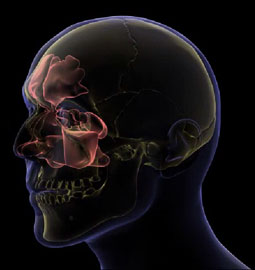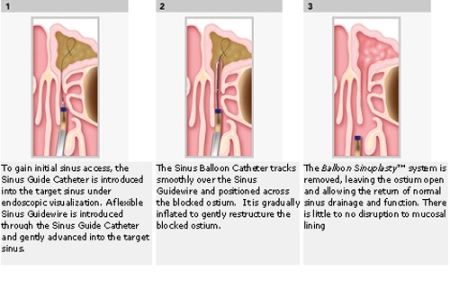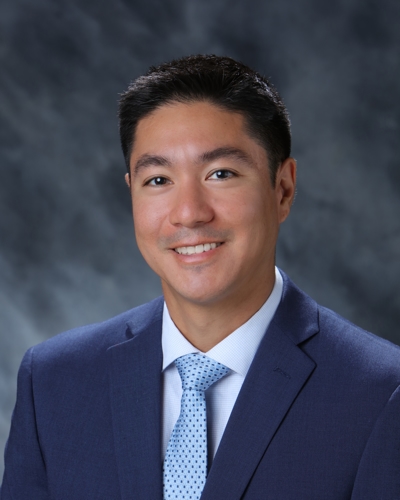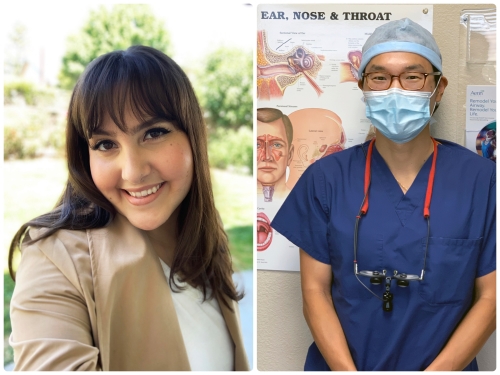
Balloon Sinuplasty™
 Balloon Sinuplasty™ is designed to improve the drainage of the sinuses,
similar to endoscopic sinus surgery. Balloon sinuplasty technology extends
the sinus surgery evolution by offering the surgeon additional tools for
endoscopic surgery. It uses a small, flexible, sinus balloon catheter
to open up blocked sinus passageways similar to the way angioplasty uses
balloons to open blocked coronary arteries. In balloon sinuplasty, a small
sinus balloon catheter is threaded through the sinus passages and introduced
into the sinus. When the sinus balloon is inflated, it gently restructures
and widens the walls of the passageway while maintaining the integrity
of the sinus. This restores normal sinus drainage and function, while
preserving normal anatomy and mucosal tissue.
Balloon Sinuplasty™ is designed to improve the drainage of the sinuses,
similar to endoscopic sinus surgery. Balloon sinuplasty technology extends
the sinus surgery evolution by offering the surgeon additional tools for
endoscopic surgery. It uses a small, flexible, sinus balloon catheter
to open up blocked sinus passageways similar to the way angioplasty uses
balloons to open blocked coronary arteries. In balloon sinuplasty, a small
sinus balloon catheter is threaded through the sinus passages and introduced
into the sinus. When the sinus balloon is inflated, it gently restructures
and widens the walls of the passageway while maintaining the integrity
of the sinus. This restores normal sinus drainage and function, while
preserving normal anatomy and mucosal tissue.
The benefits of balloon sinuplasty are that there is less trauma to the surrounding tissue and the natural sinus openings are preserved. Not all patients are candidates for this type of sinus surgery. For example, balloon sinuplasty is not effective in treating ethmoid sinusitis, removing nasal polyps or in patients with extensive scarring of their sinus openings. Balloon sinuplasty is often combined with endoscopic sinus surgery.
Goals
 Balloon sinuplasty is designed to improve the drainage of the sinuses.
The goals of surgery include:
Balloon sinuplasty is designed to improve the drainage of the sinuses.
The goals of surgery include:
- Reduction of the number and severity of sinus infections.
- Improvement of symptoms associated with sinusitis.
Surgical Treatment
- Balloon sinuplasty is performed under general anesthesia.
- Balloon sinuplasty is performed entirely through the nostrils; thus there are no incisions made on the skin.
- An endoscope, a thin camera rod with a light at the end to provide visualization and magnification, is used for direct visualization of the nasal cavity and sinuses.
- Working endoscopically through the nose, a catheter is threaded into the sinus cavity.
- A small balloon is passed over the catheter into the sinus. As the balloon is inflated, it gently restructures and widens the walls of the sinus passageway while maintaining the integrity of the sinus.
- Under direct visualization, the natural drainage pathways of the sinuses are opened.
- After the surgery, once the effects of the anesthesia have worn off, the patient is discharged home.
During the initial consultation, the doctor will examine you, study your CT Scan, if one is available, and discuss your medical history to determine whether you are a good candidate for balloon sinuplasty. The doctor will explain the surgery and what you can expect and will answer any questions and/or concerns that you have.
Post-operative Care
- After nasal and sinus surgery, you can expect drainage from your nose that will be red in color. This drainage will decrease in amount and turn lighter in color over the few days after surgery and a small amount of blood-tinged drainage may be present for about 10 to 14 days.
- Surgery also causes temporary swelling of the tissues in the nasal cavities. You may have a temporary feeling of congestion and fullness in your nose and sinuses.
- What to do:
- Please contact us with any questions or concerns. There is a doctor available 24/7.
- You can wear a cotton gauze pad underneath your nose for the first few days after surgery in order to catch the drainage from your nose. You should change the gauze under your nose as it becomes soiled. Please contact us immediately if there is any persistent bleeding.
- In order to reduce nasal congestion, it is helpful to sleep with your head elevated. For the first week after surgery, try to sleep with at least two pillows beneath your head so that your head is higher than the level of your chest.
- Take the antibiotics prescribed to you to help prevent infection. Antibiotics should be started the evening of surgery.
- Take your pain pills to help lessen the pain.
- Although pain medications will be prescribed, you are encouraged to take extra strength Tylenol or regular Tylenol instead of prescription pain medications for mild pain or discomfort. Do not take aspirin and NSAIDs such as Advil, Motrin, and Aleve, or pills that contain these drugs as they may increase chances of bleeding.
- After the surgery, follow up regularly as instructed in order to evaluate how your nasal cavity and sinuses are healing.
- Take your pain pills about 30 minutes before your first two post-operative visits.
- After your first post-operative visit, flush your nasal cavity with a saltwater solution prescribed by us. You will be given instructions on how to do this. This helps the nasal cavity and sinuses to heal better. It is normal to have large crusts or scabs coming out from the nose after using the saltwater flushes.
- Cautions and restrictions:
- In order to help prevent bleeding, do not blow your nose for 10 days after surgery. You may gently sniff back any secretions. Once you begin your saltwater nasal flushes, you can gently blow your nose. If you need to sneeze, you should do so with your mouth open. Do not hold back a sneeze.
- It is important to avoid any strenuous activity for the first 2 weeks after surgery. You may continue to get moderate exercise by walking.
- Avoid any exercise that makes you feel strained.
- Avoid bending over and lifting any objects over 20 pounds.
- Avoid aerobics, jogging, exercising, swimming or contact sports.
- Use caution when taking narcotic pain pills.
- Do not drive a car or operate any other vehicle as the pills may cause you to feel drowsy.
- Do not drink alcohol when taking the pain pills.
- Do not take any pain medication on an empty stomach.
- Drink lots of fluids and slowly advance to your regular diet as tolerated.
- Do not smoke. Avoid second-hand smoke and other fumes that can irritate the nose.
- Do not travel by airplane for a few weeks. Please await medical clearance prior to flying.
During the initial consultation, the doctor will examine you, study your CT Scan, if one is available, and discuss your medical history to determine whether you are a good candidate for balloon sinuplasty. Your doctor will explain the surgery and what you can expect and will answer any questions and/or concerns that you have.
Your doctor implements distinctive surgical approaches using the safest, most advanced, and minimally invasive techniques. Your doctor is focused on cutting-edge techniques and treatment options that offer his patients the greatest outcomes while minimizing risk.
If you are considering balloon sinuplasty, please contact your doctor to schedule a consultation.
-
ENT/Otolaryngology ENT, Otolaryngology 2557 Mowry Ave.
Suite 30
Fremont, CA 94538
(510) 248-1590 More Information




